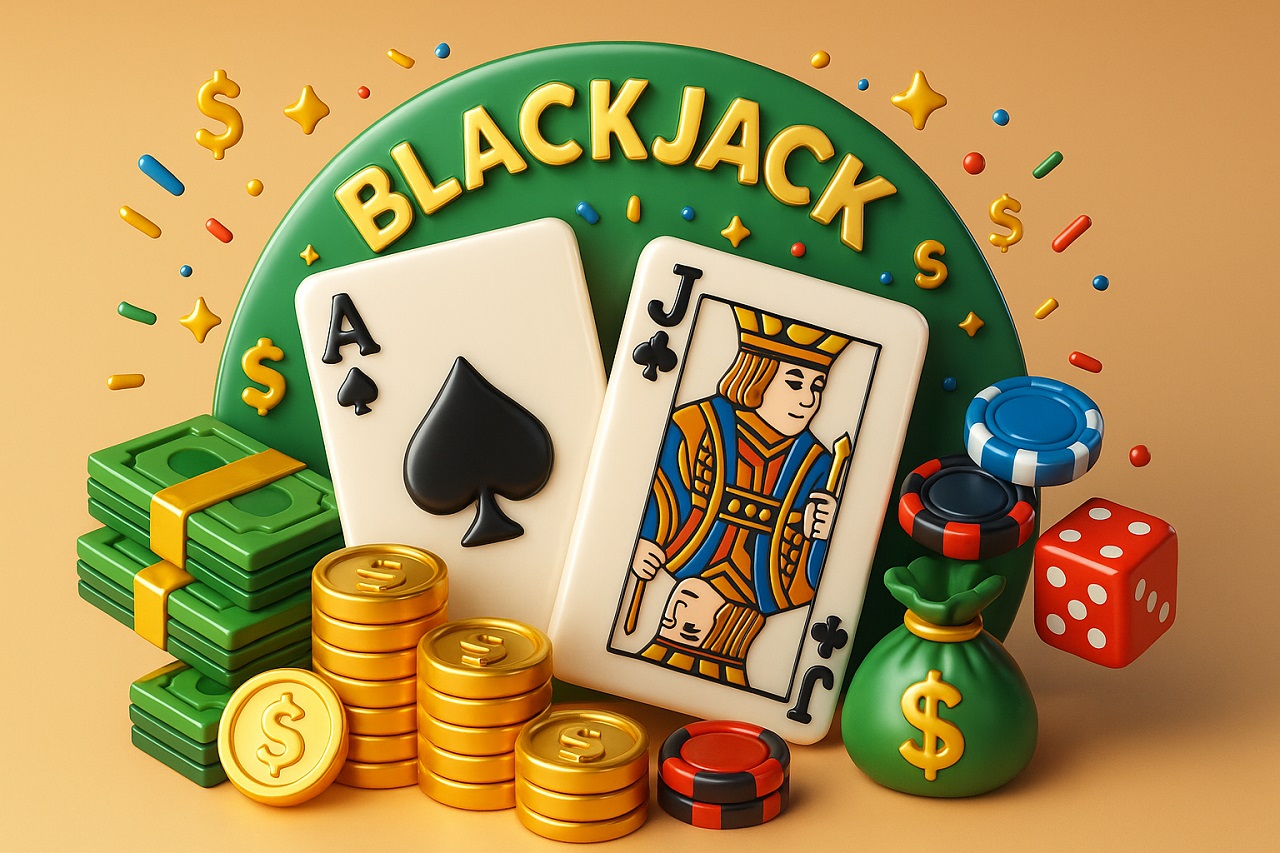The data, the math, and real-world examples of huge wins
In standard casino blackjack with solid rules and perfect basic strategy, the house edge is usually under 1 percent, often around 0.5-1.0 percent depending on the rules you face. That means over a very large number of hands, most players will lose a small fraction of their total action. Basic strategy minimizes losses, it does not flip the game in your favor.
Players can gain a positive edge by exploiting rule packages, promotions such as loss rebates, or advantage-play techniques like card counting. With correct bet sizing, counting can produce a small long-term advantage, typically a few tenths to a couple of percentage points depending on rules and penetration. Even then, variance is large and proper bankroll management is essential.
Case studies: famous big blackjack wins
1) Don Johnson’s 15 million dollar Atlantic City run (2010-2011)
Businessman Don Johnson negotiated a bespoke rule set with multiple Atlantic City casinos during a soft market and won about 15 million dollars across the Borgata, Caesars, and Tropicana in roughly five months. His package included strong rules and a 20 percent loss rebate above a threshold, collectively tilting the math in his favor.
Why it mattered: this was not a counting story. It was a pricing story. Johnson played perfect basic strategy, then let the rules and the rebate do the heavy lifting so the expected value swung to him.
2) Kerry Packer’s blitz wins, including a reported 20 million dollars in about 40 minutes
Australian media tycoon Kerry Packer was an ultra high-roller known for massive swings. Reports note a 20 million dollar win at MGM Grand in May 1995 after playing multiple hands at roughly 250,000 dollars per hand, and equally spectacular downswings such as an 11 million pound losing streak at London’s Crockfords around 2000.
Why it mattered: Packer’s wins show how bet size plus variance can produce eye-watering short-term results. They do not imply a persistent player edge, only that scale and volatility can create huge up nights and huge down nights.
3) Dana White’s seven-figure streak at the Palms (Las Vegas)
UFC president Dana White has spoken publicly about winning nearly 2 million dollars at the Palms over a three-month stretch in 2014, after which his betting limits were slashed and he was told not to play there.
Why it mattered: it is another example of how a sustained positive run, at big stakes, can force a casino to manage risk by cutting limits or declining action.
4) The MIT Blackjack Team’s multi-year “millions”
From the late 1970s through the 1990s, the MIT Blackjack Team used card counting and team play to beat casinos legally for millions. Accounts and interviews with team leaders describe how small edges compounded across large action and coordinated play. Exact totals vary by account, but the team’s success is well documented.
Why it mattered: this is the definitive example of edge play through skill, not rule negotiation. The team’s advantage was modest but consistent, realized by rigorous training, strict bankroll control, and large volume.
The math behind big wins
- Edge size: A player with no counting or special rules is playing a negative-EV game, so big wins come from favorable variance and will regress with more play. Counters or negotiated deals can create a small positive edge, but it is rarely large.
- Variance and bankroll: Even with an edge, swings are big. Pros use risk-of-ruin modeling and conservative Kelly-fraction bet sizing to keep the chance of going broke acceptably low.
- Rules matter: Seemingly small tweaks, such as the dealer standing on soft 17, re-splitting aces, or generous surrender, change the house edge by tenths of a percent. Over huge volume or at 100,000 dollars per hand, that is decisive. Don Johnson’s negotiated loss rebate is a textbook example of turning a near-even game into a player-favorable one.
What these stories do and do not prove
- They prove that blackjack can yield life-changing wins when either
- you hold an edge through rules, promotions, or skill, or
- you play at stakes so large that normal variance produces massive dollar swings.
- They do not prove that most players can repeat these results. Casinos adjust quickly, cut limits, change rules, or bar advantage players from playing, especially at scale.
Practical takeaways if you want to maximize your ceiling
- Master basic strategy for the exact rules you are facing. This is the baseline.
- Choose good rules, not just comps. Favor games that stand on soft 17, allow late surrender and double after split, and offer deep penetration. Each rule improvement trims the house edge.
- If you pursue advantage play, study card counting, bankroll, variance, and risk of ruin, and be realistic about the small edge and the time required to realize it.
- Bankroll discipline beats hunches. Consider fractional-Kelly style bet sizing if you actually have an edge, and set stop-loss and stop-win points to manage volatility.
- Expect casino countermeasures. Limit cuts, heat, and game changes are part of the territory at higher stakes and for consistent winners. The Johnson and White cases show how quickly conditions can change after big wins.
Bottom line
Blackjack can win you a significant amount of money, but the path is narrow. The most credible seven-figure wins either involved elite negotiation of rules that created a player advantage, as with Don Johnson, or astronomical stakes that made variance deliver a huge dollar result, as with Kerry Packer and Dana White. For everyone else, the house edge still applies and discipline, game selection, and sober expectations are crucial.
Note: Dollar amounts are reported figures and may reflect historical exchange rates and rounding.

